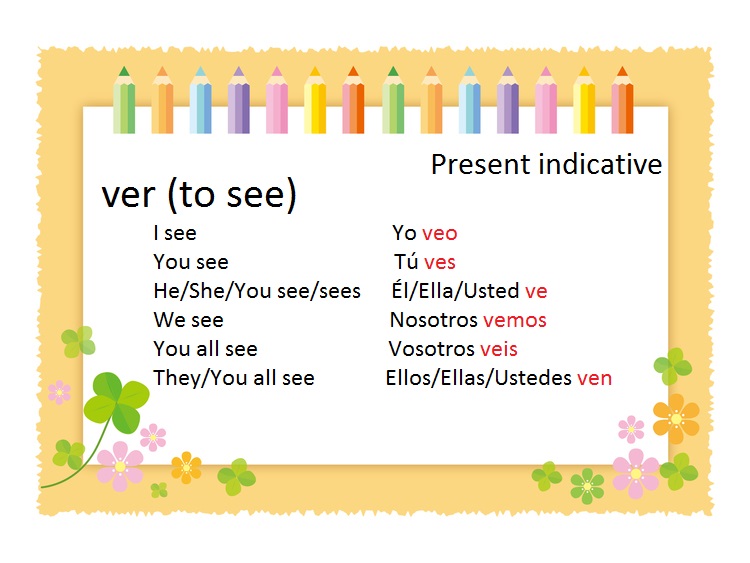

- CONJUGATION PAST TENSE SPANISH HOW TO
- CONJUGATION PAST TENSE SPANISH PDF
- CONJUGATION PAST TENSE SPANISH DOWNLOAD
Thus, this verb is commonly used with things that don’t change very easily, such as: The verb “ ser” describes the core being or characteristic of a noun. That’s the general way Spanish differentiates between the verbs “ ser” and “ estar.” However, there is a bit more nuance to this, so let’s jump right into a few more cases! When to use "ser" Describing things that won’t change easily

Your anger will pass no matter how badly you wanted that last almond croissant that the person in front of you ordered at the coffee shop. Perhaps it’s even worse and you’re hangry (hungry and angry)! But the commonality in all these situations is that they are transitory states. You may have already noticed that the verb “to be” can be translated into both the verb “ser” and the verb “estar.” That’s because Spanish has a distinction between a permanent state of being and a transitory state of being.įor example, when you say that you “are angry,” does that mean that you are permanently angry? Is that an intrinsic part of who you are? No, right! It just means that someone cut you off in traffic or a customer service agent refused to give you a refund for a defective item. That way, you’ll have a strong grip of this elementary verb by the time you’re done with this article! With many conjugation rules to learn and even more irregular verbs that love to break the rules, it will take many hours of dilligent study and plenty of practice to finally nail down the conjugation of every verb.īut no need to panic! Taking it slow and steady is the best way to learn all the different conjugations, and this time, we’ll spend a good amount of time going over the different conjugations for the verb “to be” in Spanish. However, many Spanish learners find that verb conjugations in Spanish are a whole new beast. This conjugation of the verb “to do” is something that every native English speaker can do without much effort. For example, you know that you do something, but your friend does something.

Sometimes changing the verb can completely change the meaning: serĪburrido means to be boring, while estar aburrido means to be bored.To be or not to be? To ser or to estar ? This question takes an added challenge as you learn to conjugate “to be” in Spanish.Īs a native English speaker, you’re already somewhat familiar with verb conjugations. Estar is used to tell the location of something or how someone feels. What something is, its basic characteristics, or its origin. For now, just learn the forms for recognition purposes. In general, the preterite expresses a completed action in the past while the imperfect expresses a repeated or continuing action in the past. The difference between the preterite and imperfect tenses will be explained in Spanish II. Voseo is usually associated with Argentina but there are many more places in Latin America that use vos in some form so it is important to be aware of it. There is a lot of variation in the vos conjugations, in addition to the use of the pronoun tú with a vos conjugation or the pronoun vos with a tú conjugation. A final -s may or may not be used for the vos conjugation in the preterite tense. For the present tense conjugation of ser, in some regions of Chile, Colombia, and Cuba the vos conjugation is soi, whereas in some parts of Panama and Venezuela it is sois. Sometimes the present tense conjugation is identical to the tú conjugation (in which case, there will only be one form given in the conjugation charts). The conjugation for vos is usually only different from the tú conjugation in the present tense and the imperative (commands), though there can be differences in the preterite and subjunctive as well. You do not need to use the subject pronouns unless you want to emphasize the person, or to avoid ambiguity. Highlighted forms are only used in northern/central Spain.
CONJUGATION PAST TENSE SPANISH DOWNLOAD
Thank you for supporting ! Download the first ten pages of Spanish Language Tutorial (including the table of contents).
CONJUGATION PAST TENSE SPANISH PDF
The PDF e-book and mp3s - including nearly two hours of recordings by five native speakers from three countries - are available for immediate download with FREE lifetime updates.
CONJUGATION PAST TENSE SPANISH HOW TO
Spanish Verbs Be and Have - Ser, Estar, Tener Learn how to conjugate ser, estar, and tener in Spanishīuy Spanish Language Tutorial as a PDF e-book! Spanish Language Tutorial includes a complete vocabulary and grammar review of the Spanish language (much more than what is available online), transcripts of authentic Spanish videos, and Spanish realia photos.


 0 kommentar(er)
0 kommentar(er)
